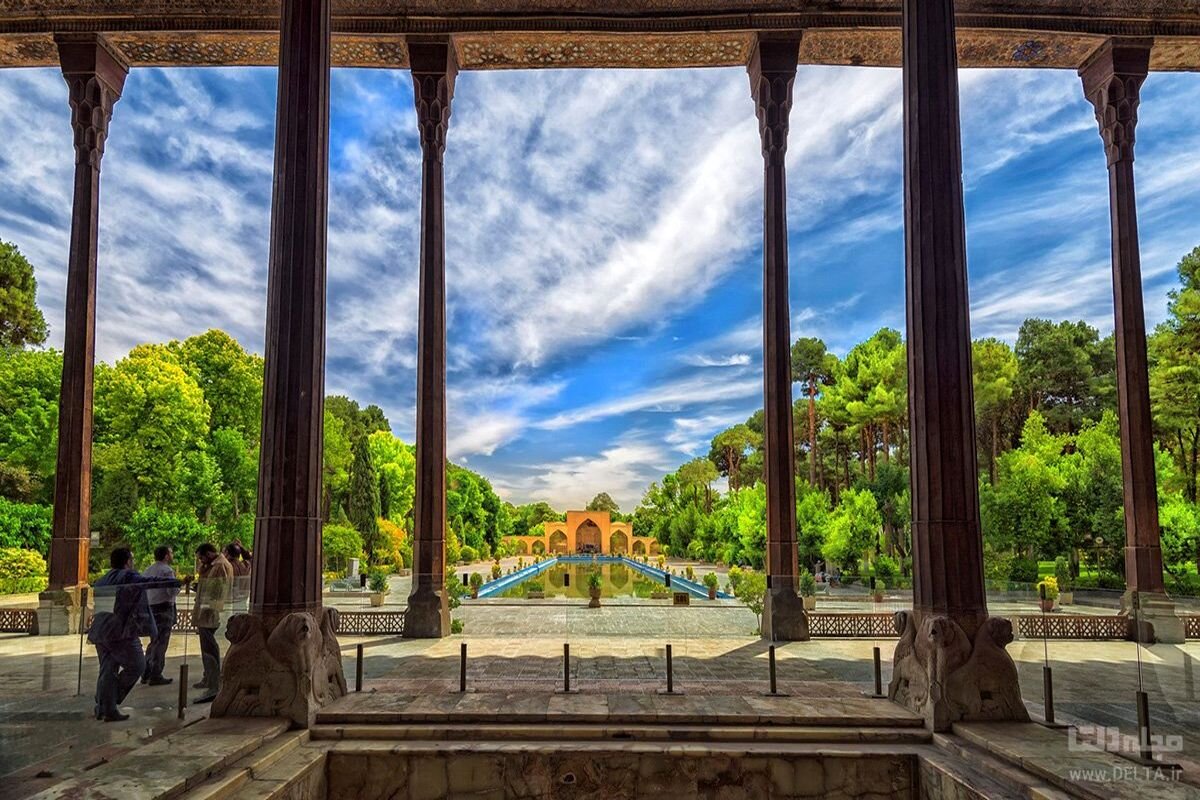Chehel Sotoun, where Safavid kings received dignitaries and ambassadors, undergoes restoration

TEHRAN—Restoration work commenced on the lavishly decorated terrace of Chehel Sotoun, where Shah Abbas II and his successors received dignitaries and ambassadors in the 17th century.
“It is the seventh phase of a restoration project that has begun on the columned terrace of Chehel Sotoun,” Mehr quoted the director of the cultural heritage site as saying on Saturday.
That project was initially started in 2017 and up to the moment 12 out of 15 segments of its wooden roof, including arrays of lavish decorations, have been restored, Asefeh Badr said.
Located in Isfahan, the palace was constructed as a pleasure pavilion and reception hall midst of a large park, itself an exemplar of the Persian Garden which has been inscribed on the UNESCO World Heritage list.
Chehel Sotoun was once part of the royal precinct that stretched between Naqsh-e Jahan (Imam) Sq. and Chahar Bagh Abbasi St.
The name of the palace, which literally means “Forty Columns”, derives from the illusion that the twenty columns of the front portico are doubled by the reflecting pool to the south.
The palace is entered via an elegant terrace that connects a pattern of the Persian garden to an interior of elaborate design and splendor. Chehel Sotoun boasts eye-catching frescos that depict multitudes of human figures, royal meetings, and battle scenes among them: the reception of an Uzbek King in 1646 and the infamous Battle of Chaldiran against the Ottoman Sultan Selim I.
Based on historical records, the building was initially constructed in the mid-17th century and rebuilt in 1706 following a raging fire.
Half the world?
The ancient city of Isfahan was once a crossroads of international trade and diplomacy in Iran and now it is one of Iran’s top tourist destinations for good reasons. It is filled with many architectural wonders, such as unmatched Islamic buildings, bazaars, museums, Persian gardens, and tree-lined boulevards. It's a city for walking, getting lost in its mazing bazaars, dozing in beautiful gardens, and meeting people.
The city is renowned not only for the abundance of great historical bridges but also for its ‘life-giving river’, the Zayandeh-Rood, which has long bestowed the city an original beauty and fertility.
Isfahan has long been nicknamed as Nesf-e-Jahan, which is translated into “half the world”; meaning seeing it is relevant to see half the world. In its heyday, it was also one of the largest cities in the region with a population of nearly one million.
The cool blue tiles of Isfahan's Islamic buildings, and the city's majestic bridges, contrast perfectly with the encircling hot, dry Iranian countryside.
The huge Imam Square, best known as Naghsh-e Jahan Sq. (literary meaning “Image of the World”), is one of the largest in the world (500m by 160m), and a majestic example of town planning. Constructed in the early 17th century, the UNESCO-registered square is punctuated with the most interesting sights in Isfahan.
It was laid out under the reign of the Safavid ruler, Shah Abbas the Great, to signal the importance of Isfahan as the capital of his powerful empire. It is hemmed on four sides by magnificent buildings: to the east, the Sheikh Lotfollah Mosque; to the west, the palace of Ali Qapu; to the north, the portico of Qeysarieh; and to the south, the eminent Imam Mosque.
“The square was at the heart of the Safavid capital’s culture, economy, religion, social power, government, and politics. Its vast sandy esplanade was used for celebrations, promenades, and public executions, for playing polo and for assembling troops,” according to the UNESCO website.
AFM
